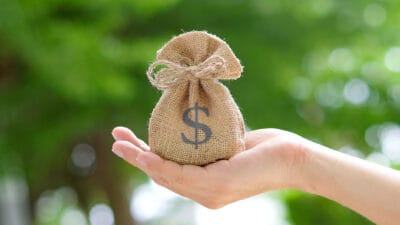Earning a $300 monthly passive income, or $3,600 a year, from just $4,000 of savings is well within reach for most every Aussie investor.
Of course, I won't get there overnight.
And my goal will be harder to achieve if I opt to spend the passive income from my $4,000 initial investment in ASX dividend stocks every time that lands in my bank account.
But if I'm patient, the potential capital gains from my ASX share portfolio atop with reinvesting those dividends should see me reach my goal in good time.
Here's how I'd go about it.
A $300 monthly passive income from ASX 200 dividend shares
First, I'd allocate $800 across five ASX dividend shares operating in five distinct sectors. Namely banking, mining, energy, retail and healthcare. Ideally one or more of these stocks will have a significant international footprint as well.
This kind of diversification will decrease the risk of my passive income stream taking a big hit should any particular sector run into a rough patch.
My preference goes to S&P/ASX 200 Index (ASX: XJO) dividend stocks, with a long track record of reliable payouts. I also prefer ASX 200 shares that pay fully franked dividends, allowing me to hold onto more of that passive income at tax time.
If I don't have the time or experience to research the right stocks for my portfolio, I'd either seek out some professional advice or consider investing in the BetaShares Australian Dividend Harvester Fund (ASX: HVST).
The ASX exchange-traded fund (ETF) gives me instant diversity with exposure to a diversified portfolio of 40 to 60 leading ASX dividend shares.
As at 31 October, the 12-month HSVT yield was 7.4%. The 12-month grossed-up yield, which includes franking credits (currently franked at 77%), is 9.9%.
Reinvesting and the power of compounding
To give you an idea of the big difference reinvesting dividends makes to my longer-term passive income stream, we turn to the S&P/ASX 200 Gross Total Return Index (ASX: XJT), which includes all cash dividends reinvested on the ex-dividend date.
Over the past four years (a period which includes the pandemic market crash) the ASX 200 Gross Total Return Index has gained 23%. Or an average of 5.8% annually.
That compares to a 5% four-year gain posted by the ASX 200, for an average annual gain of 1.3%.
So, I'll definitely be reinvesting the dividends I earn from my initial $4,000 investment to reach my passive income goal within a reasonable time frame.
Barring future global pandemics, I believe I can outperform the 5.8% average annual gain of the Total Return Index. With the right high-growth investment strategy I think 10% a year should be achievable.
Which is where a bit of patience and the magic of compounding comes into play.
Assuming I can earn the 7.4% 12-month dividend yield returned by BetaShares Australian Dividend Harvester Fund, I'll need $48,649 to reach my passive income goal of $300 a month, or $3,600 a year.
According to my trusty compound interest calculator, that will take me just over 25 years to achieve with a $4,000 investment in ASX 200 dividend shares today.








